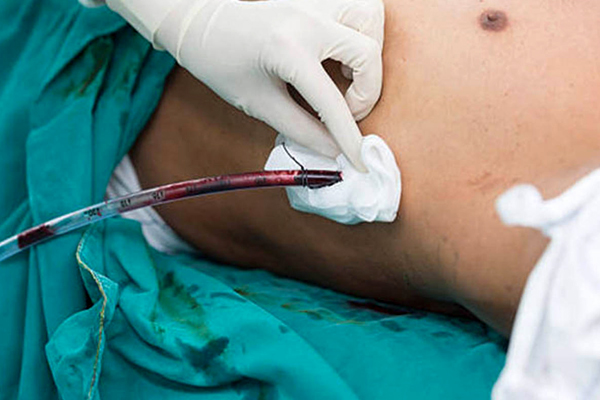
Intercostal Drainage Tube Insertion
Intercostal Drainage Tube (ICD) insertion is a procedure used to remove air, fluid, or pus from the pleural space (the space between the lungs and the chest wall). It is commonly performed in patients with conditions such as pleural effusion, pneumothorax, or infection (empyema) to help the lungs expand fully and improve breathing.
Our ICD Insertion Services Include:
Accurate Diagnosis:
Before performing ICD insertion, a thorough assessment, including chest X-rays, CT scans, and clinical evaluation, helps determine the exact cause of fluid or air buildup in the pleural space.
Safe & Effective Insertion:
The procedure is performed under local anesthesia, where the doctor makes a small incision between the ribs and places the drainage tube into the pleural space. This allows for the removal of air, fluid, or blood.
Continuous Drainage & Monitoring:
Once the tube is in place, fluid or air is continuously drained, helping the lung reinflate and preventing complications like pleural effusion or pneumothorax from worsening.
Post-Procedure Caring:
Regular monitoring of the patient’s condition, ensuring the tube is draining properly and minimizing the risk of infection or discomfort. The tube is usually removed once the condition stabilizes.
Follow-up & Complications Management:
Careful follow-up visits to ensure proper lung function and to monitor for any signs of reaccumulation or infection after tube removal.